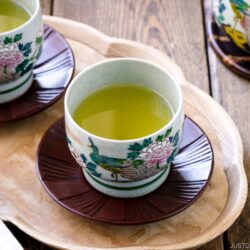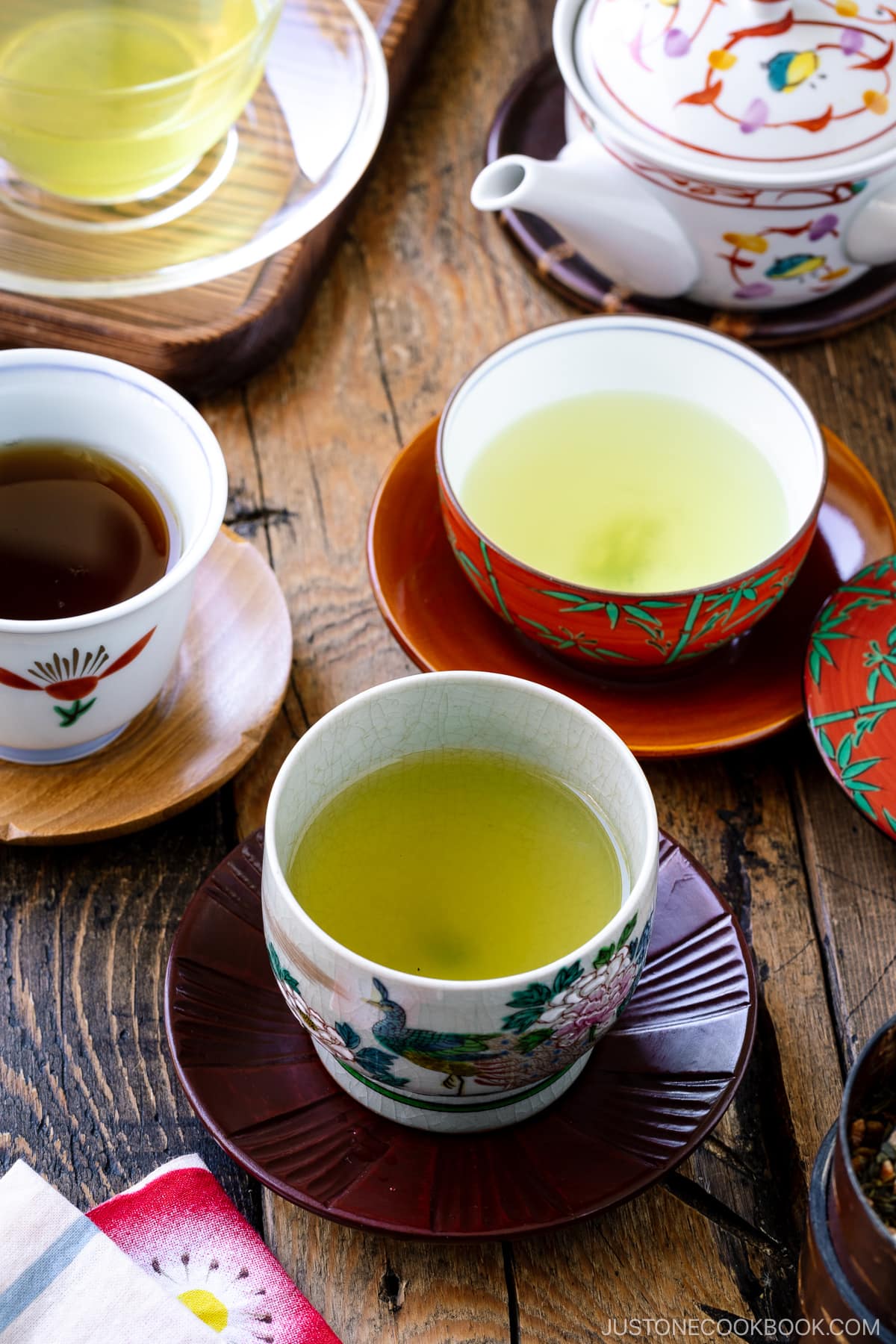
Japanese green tea is more than just a beverage—it’s a tradition steeped in history reflecting Japan’s deep appreciation for craftsmanship, mindfulness, and nature. Whether you’re new to making green tea or looking to refine your technique, using the right methods can make all the difference.
In this guide, I’ll show you how to brew the perfect cup of Japanese green tea—from choosing the right tea leaves to mastering water temperature and steeping time.
Wish to learn more? Read Your Guide to Japanese Green Tea and Japanese Green Tea: From Matcha to Sencha & Beyond.
Choose the Right Green Tea
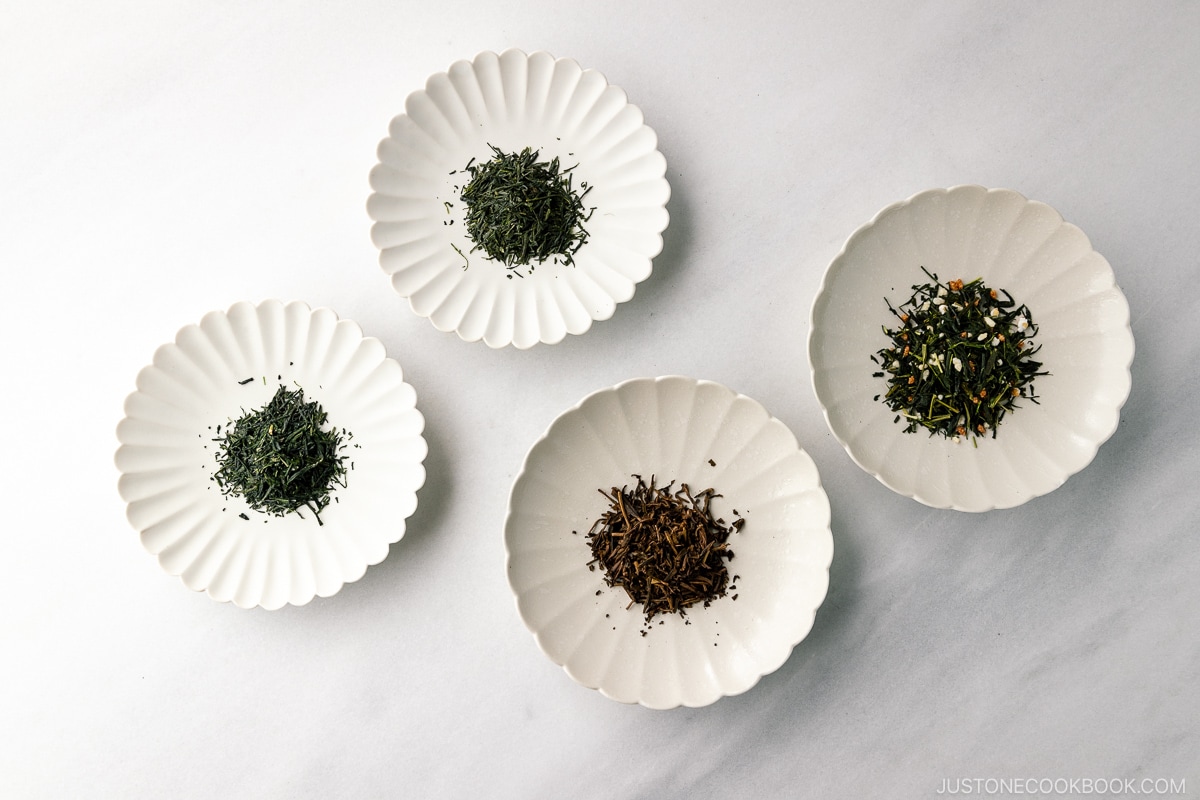
In Japan, green tea is called ryokucha (緑茶) or more commonly o-cha. First, select the type that suits your taste. Below are the most popular varieties.
- Sencha (煎茶): The majority of teas in Japan are made into sencha. It has the perfect balance of aroma, sweetness, earthy flavor, and astringency.
- Gyokuro (玉露): Gyokuro is regarded as the highest quality and most flavorful green tea. This premium variety is shade grown, producing a deep umami taste.
- Genmaicha (玄米茶): This is a blend of green tea mixed with toasted and puffed brown rice, offering a nutty aroma.
- Hojicha (ほうじ茶): This roasted green tea has a dark color, mild and toasty flavor, and low caffeine content.
How about matcha (抹茶)? The Japanese place this finely ground green tea powder in a separate category from ryokucha. Read our guide on How to Make Matcha to whisk up a bold and creamy cup.
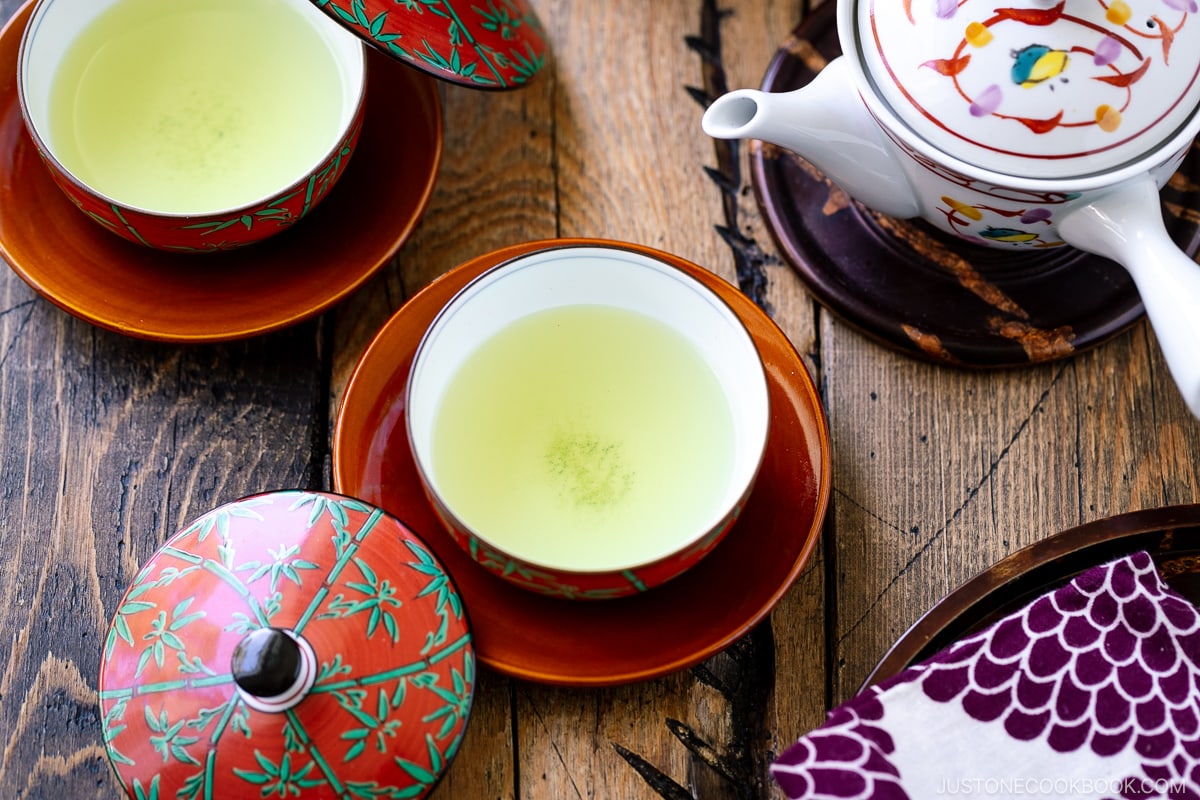
Did You Know?
Green tea, black tea, and oolong tea all come from the same plant, Camellia sinensis. The difference lies in the level of oxidation the leaves undergo during processing. After harvest, Japanese tea leaves are steamed or pan-fired to stop oxidation and preserve their vibrant green color, fresh aroma, and delicate flavors. Japanese green tea also retains more antioxidants and beneficial compounds than other types, offering many health benefits.
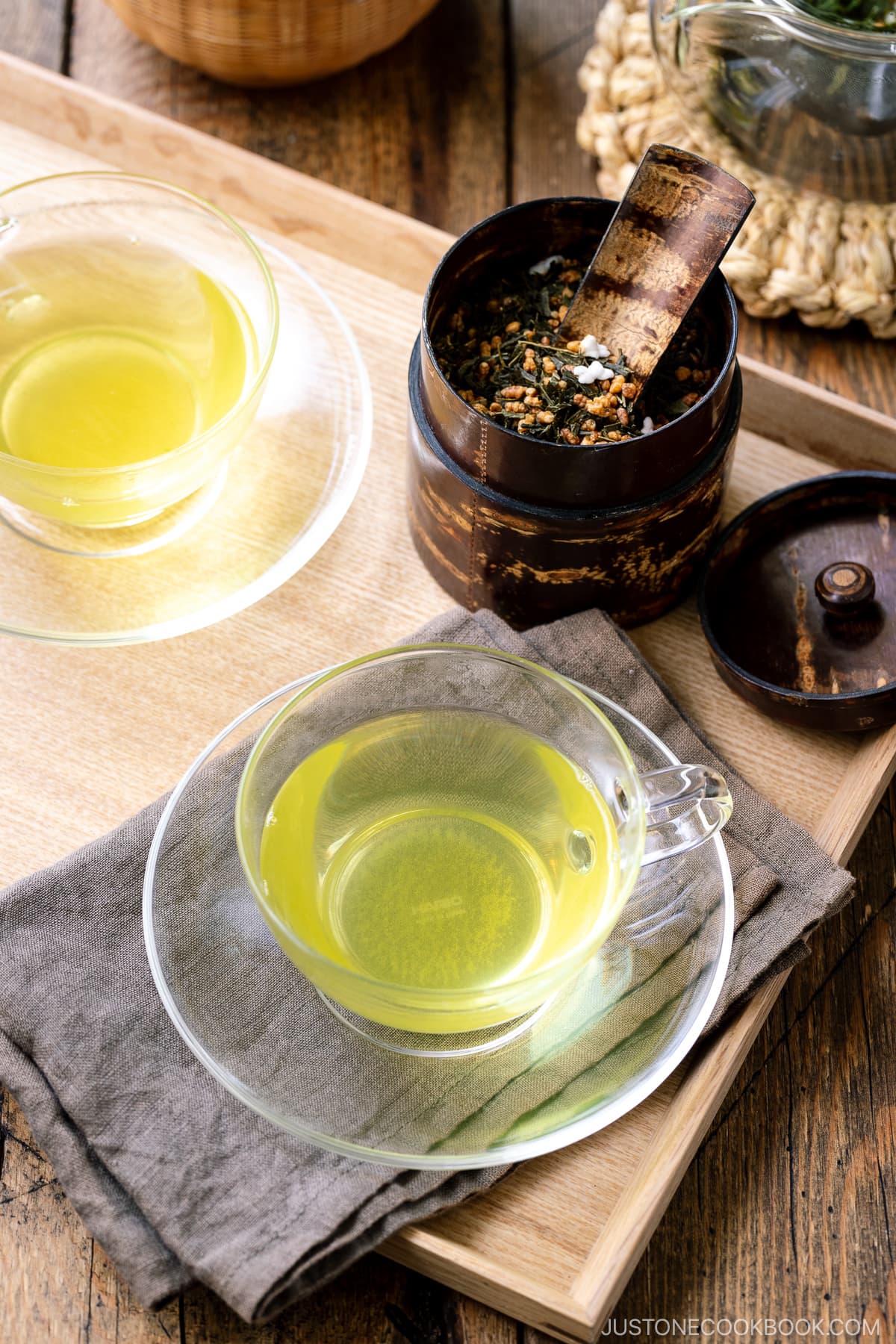
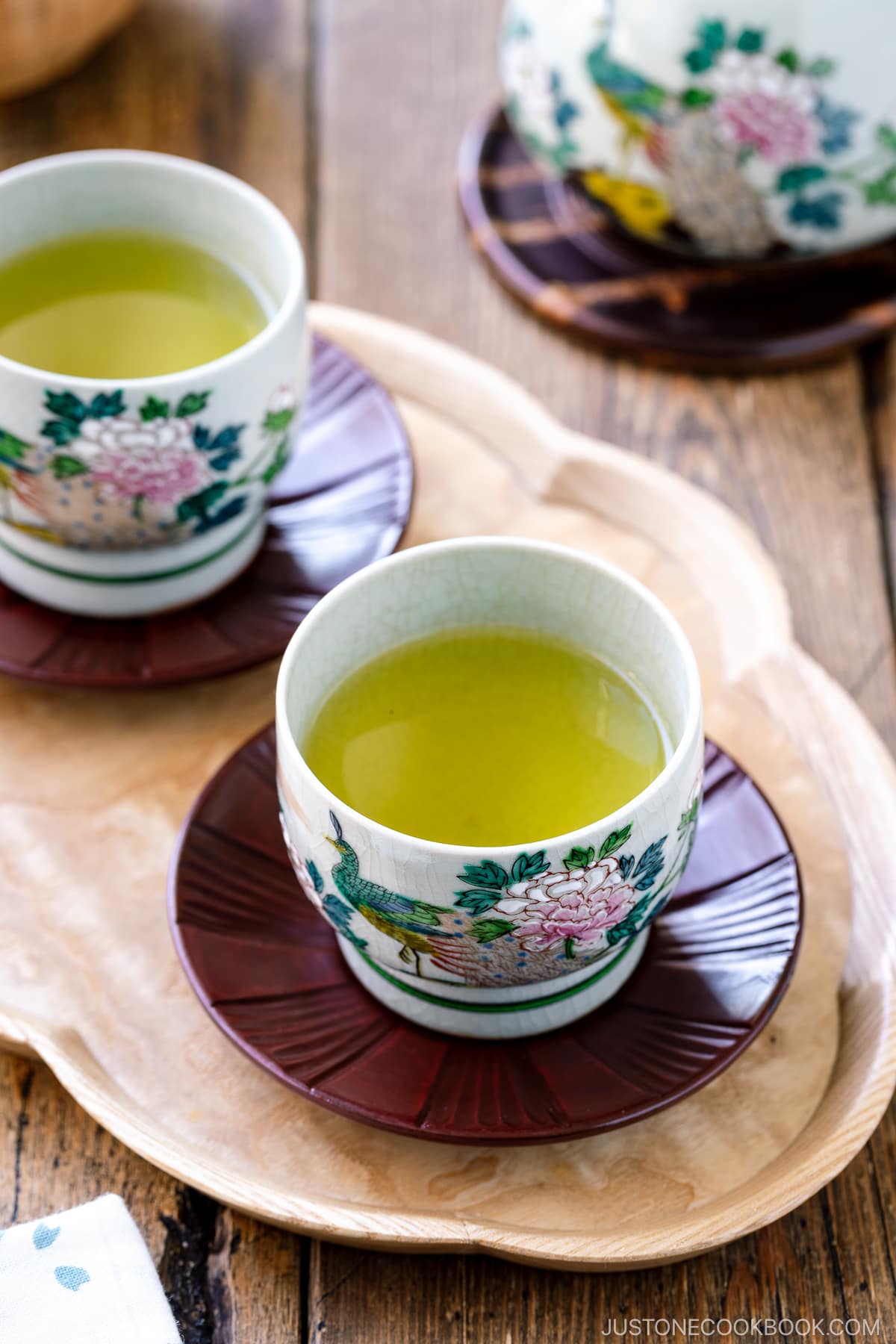
Pro Tips for Brewing Green Tea
Here are the key factors that contribute to making great green tea:
- Quality water: We recommend using soft water, which has low mineral content and enhances tea’s natural sweetness. Good water yields a good pot of tea.
- Water temperature: The ideal temperature varies by tea type and helps you achieve the perfect balance of sweetness and astringency. Too hot, and the tea may get over-extracted and bitter.
- Water volume: Too much water can dilute the flavor. Follow the suggested leaves-to-water ratio for the tea type you’re brewing.
- Amount of tea leaves: [Generally, use 10 grams (about 2 tablespoons) per teapot, but feel free to adjust based on personal preference.]
- Brewing time: Try not to steep for too long and risk over-extraction. Brew time varies by the tea type as well. You can steep green tea leaves 2–3 times for additional cups.
Equipment You’ll Need
- Loose-leaf Japanese green tea
- Kitchen scale – to weigh tea leaves and hot water
- Tea kettle and instant-read thermometer – or use an electric kettle with temperature control
- Teapot and teacup – explore artisan teaware made in Japan at JOC Goods, our online shop
- Timer
- Fine-mesh sieve – to filter out tea leaves; skip it if your teapot has a built-in strainer
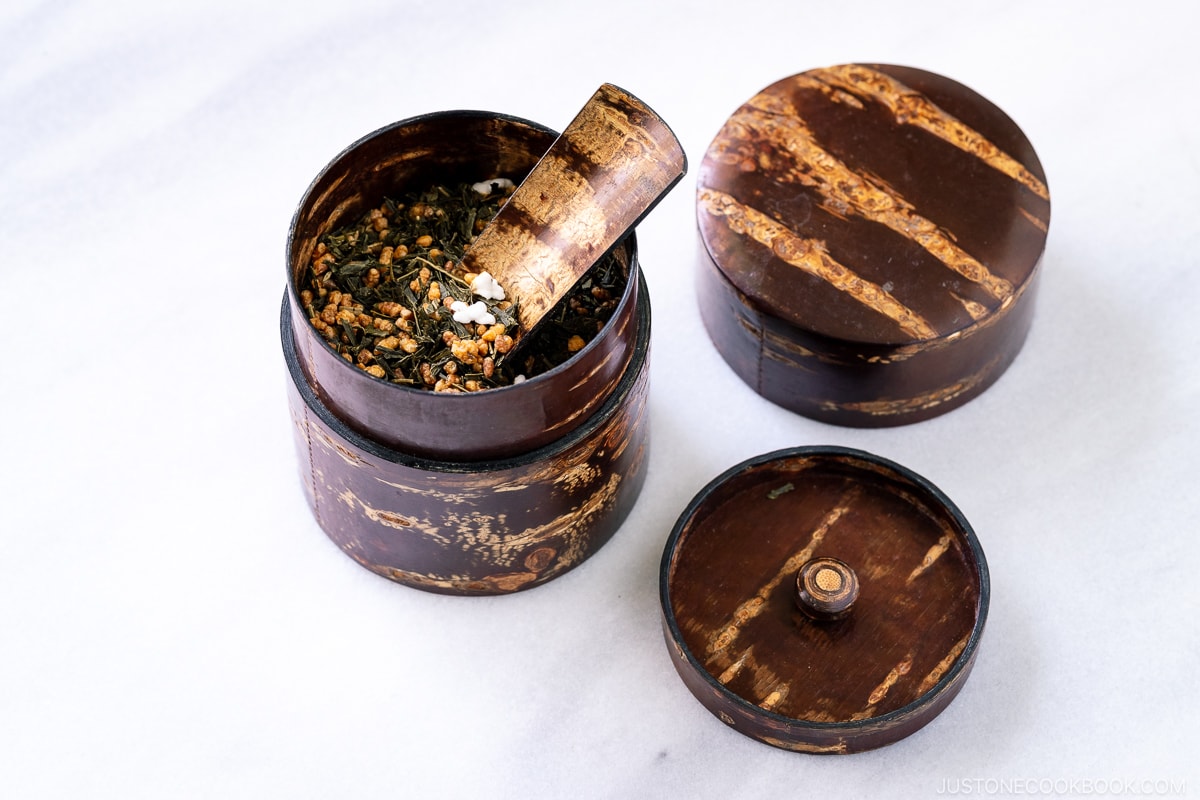
How to Brew Japanese Green Tea
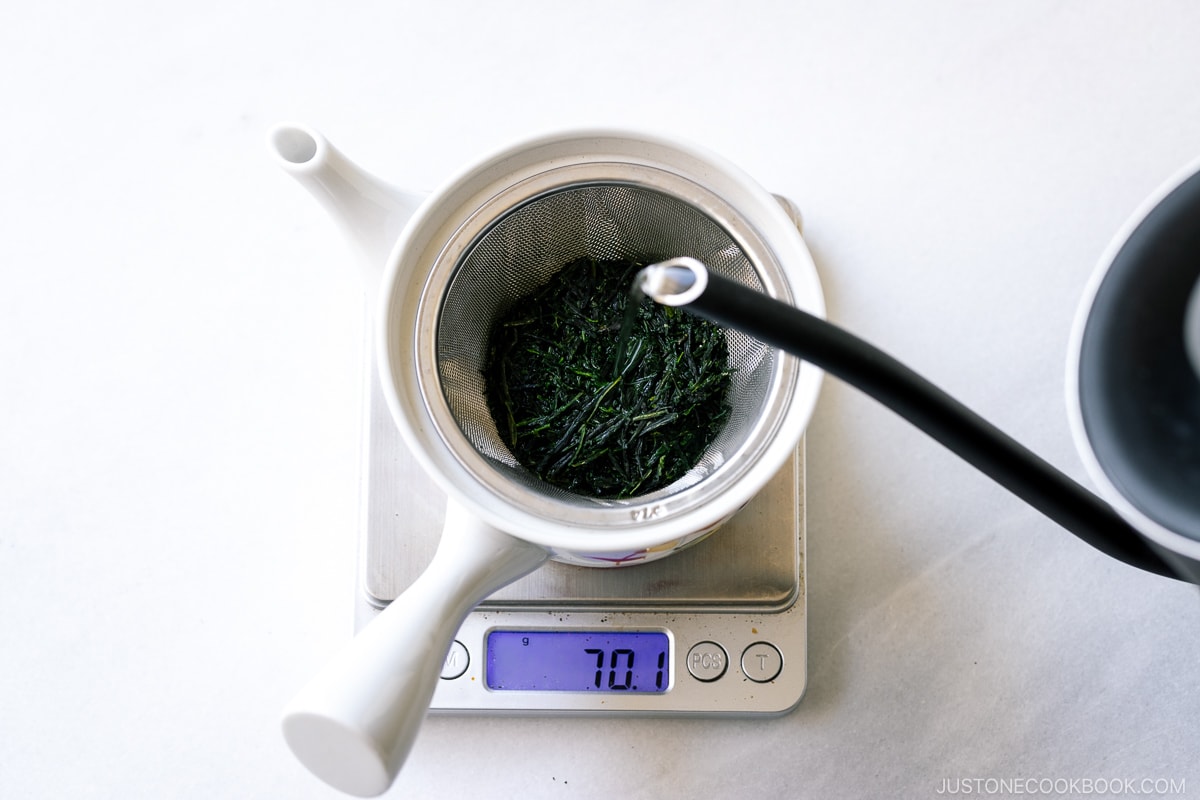
Follow these simple steps to brew the perfect cup. The specific ratios, temperatures, and brew times will differ based on the tea type (see the next section for details).
- Measure the tea leaves and add to a teapot. We suggest using a digital kitchen scale to weigh the loose leaves, especially if you’re new to making tea. With experience, you can learn the approximate amount and skip the scale.
- Heat water to the proper temperature. Use a thermometer so there’s no guesswork.
- Add hot water into the teapot over the leaves. We set the teapot on a kitchen scale for precise measuring.
- Steep for the indicated length of time. For accuracy, we suggest setting a timer.
- Pour every last drop into your tea cups and enjoy.
Japanese Green Tea Recipes
Below are the leaves-to-water ratios, water temperatures, and brew times for four popular types of Japanese green tea. The ratios we list are for two people:
Sencha (Standard Green Tea)
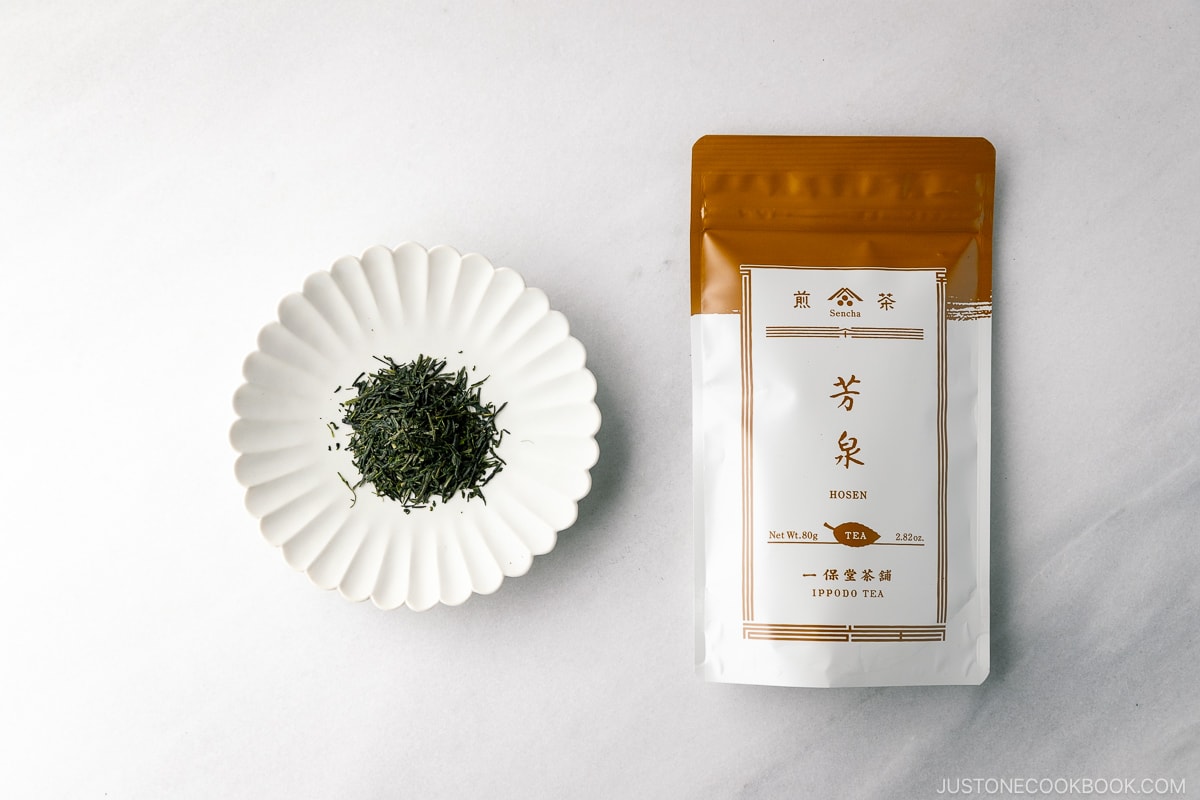
- Sencha leaves: 10 g (0.35 oz, roughly 2 Tbsp)
- Water temperature: 176ºF (80ºC)
- Water amount: 210 ml (7 oz, 7/8 cup)
- Steep time: 60 seconds
Gyokuro (Premium Shade-Grown Green Tea)

- Gyokuro leaves: 10 g (0.35 oz, roughly 2 Tbsp)
- Water temperature: 140ºF (60ºC)
- Water amount: 160 ml (6 oz, 3/4 cup)
- Brewing time: 90 seconds
Genmaicha (Green Tea and Roasted Brown Rice Blend)
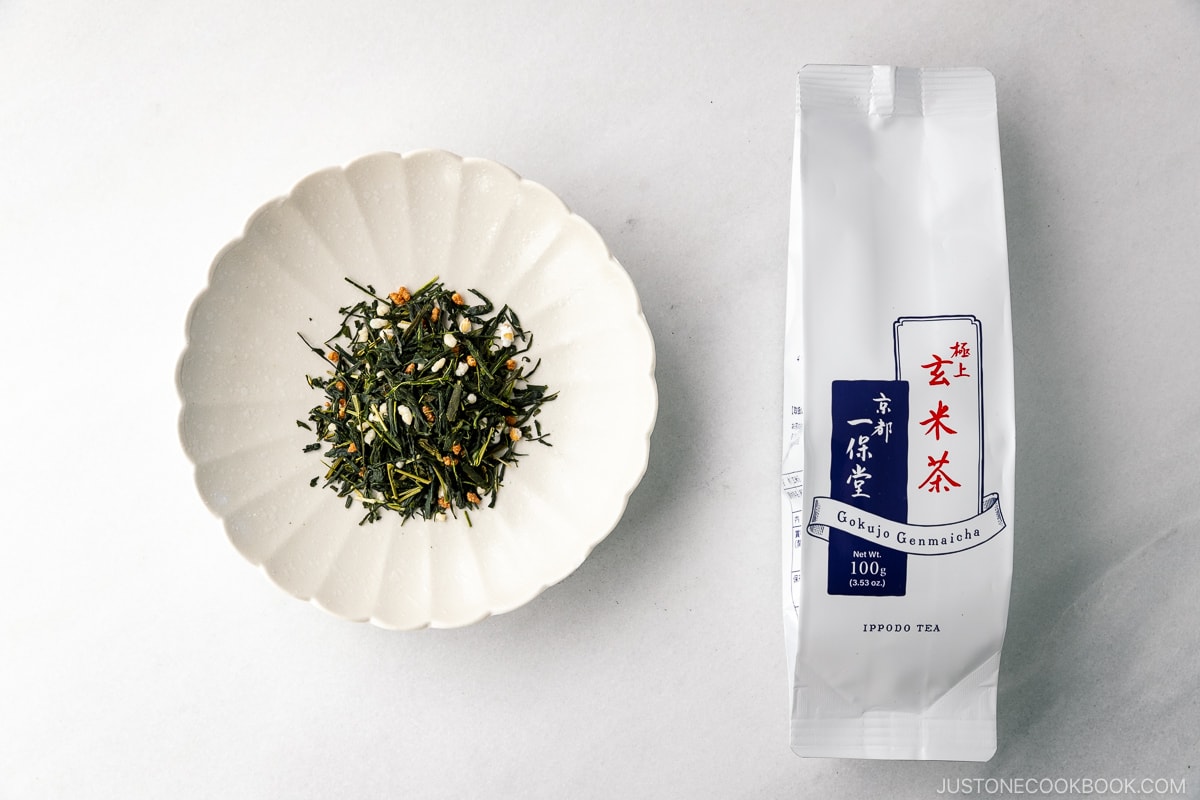
- Genmaicha leaves: 10 g (0.35 oz, roughly 2 Tbsp)
- Water temperature: 212°F (100°C; boiling)
- Water amount: 240 ml (8 oz, 1 cup)
- Brew time: 30–40 seconds
Hojicha (Roasted Green Tea)
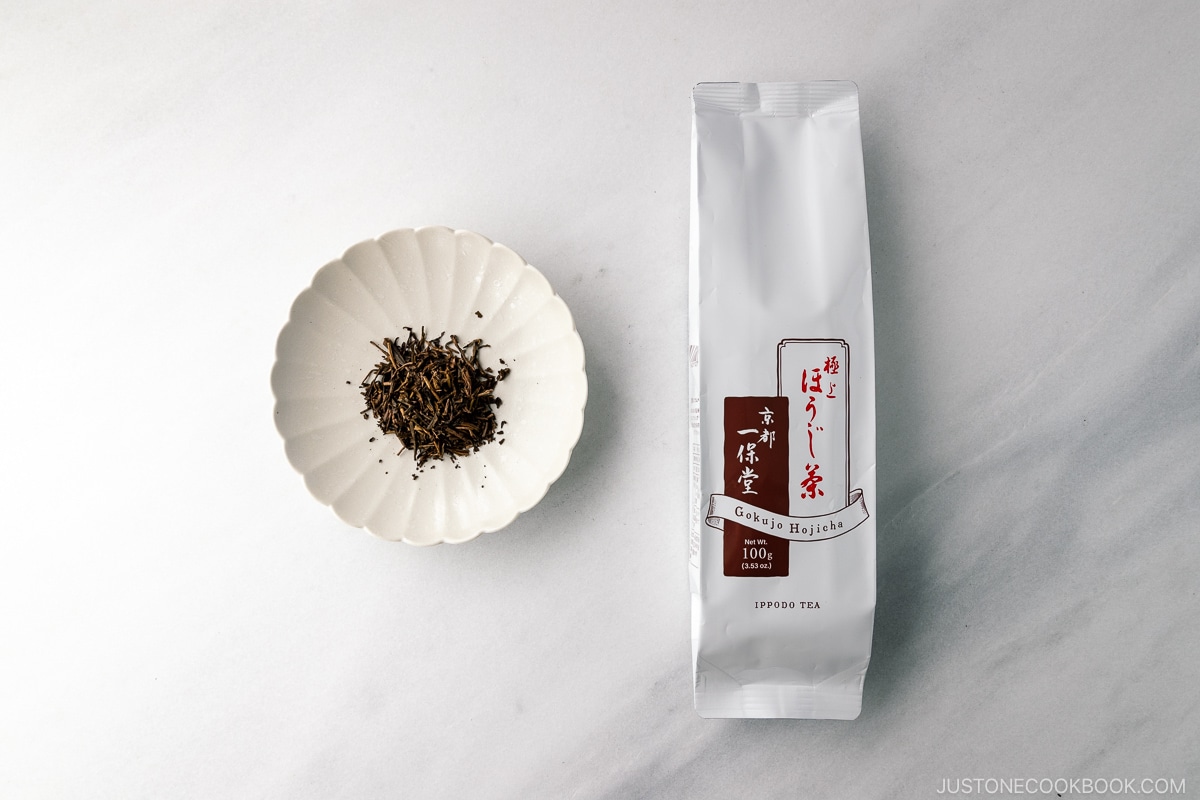
- Hojicha leaves: 10 g (0.35 oz, roughly 4 Tbsp)
- Water temperature: 212°F (100°C; boiling)
- Water amount: 240 ml (8 oz, 1 cup)
- Brew time: 30–40 seconds
Additional Tips
- Watch the brew time closely. Even expensive tea can taste awful if brewed for too long.
- Avoid flavoring agents. For high-quality Japanese green tea, we do not recommend adding honey, spices, herbs, mint, cinnamon, lemon, or other flavorings.
- Use a sieve instead of a tea infuser. This allows the tea leaves to absorb the water and release their full flavor. Our instructions are for loose tea leaves. For tea bags, please follow the package instructions.
- Choose high-quality, loose-leaf tea from a reputable grower or supplier. We highly recommend Ippodo Tea and Japanese Green Tea Co. for their quality products.
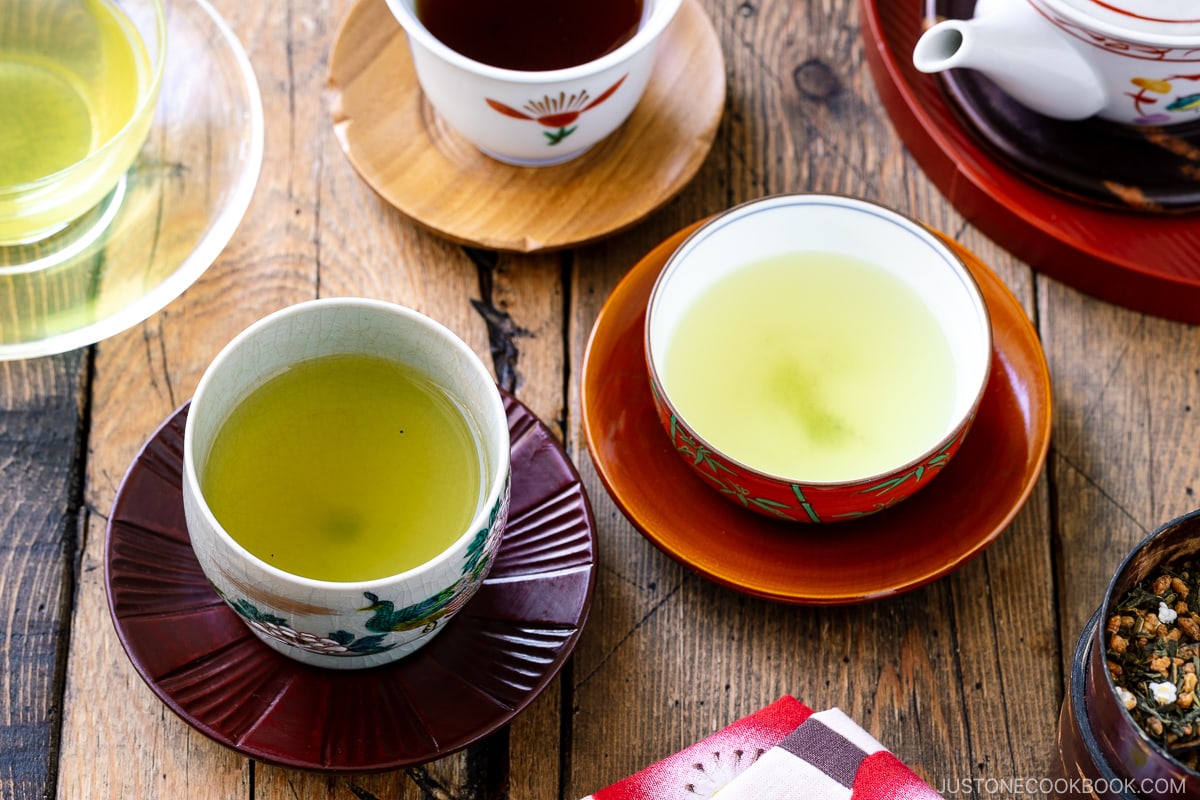
How to Enjoy Japanese Green Tea
Green tea pairs well with the Japanese diet, complementing savory foods without overpowering the flavors. You can enjoy it with breakfast or alongside your afternoon meal. It is especially refreshing after a heavy meal.
We also love pairing green tea with Japanese sweets like Dorayaki, Taiyaki, Mitarashi Dango, or Strawberry Mochi.
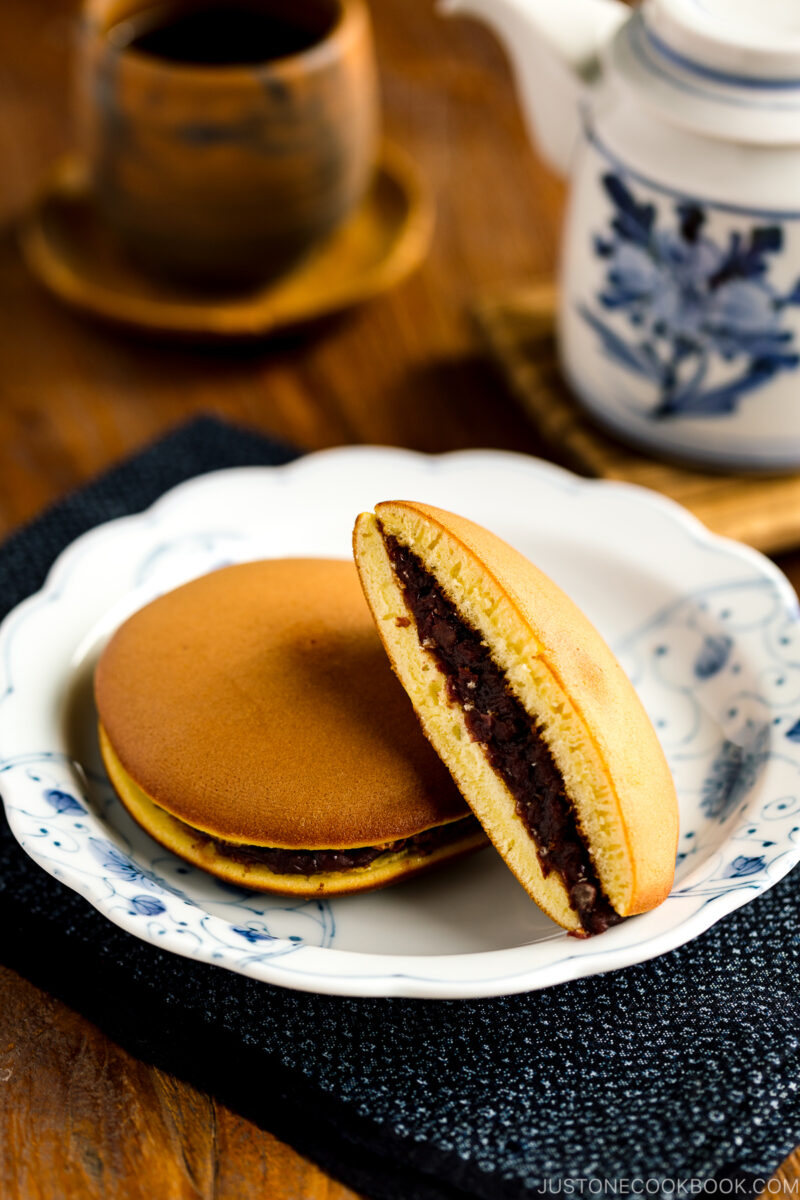


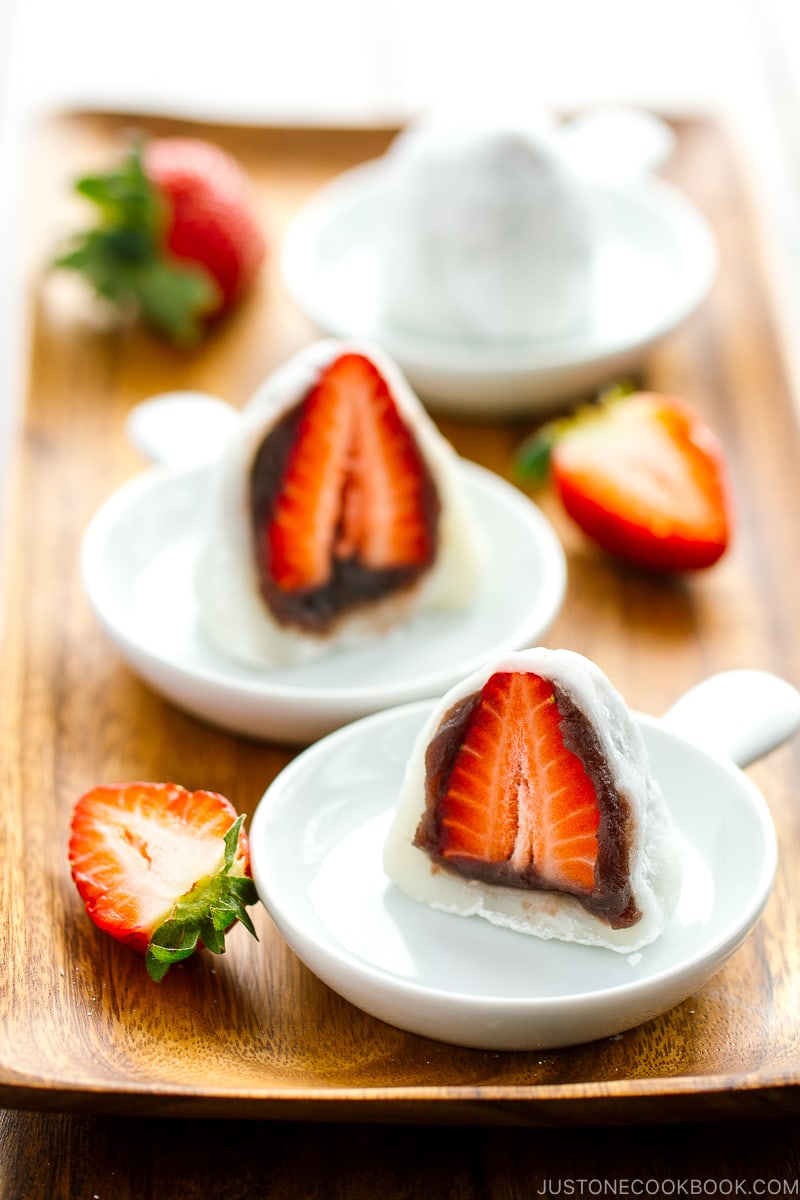
Frequently Asked Questions
You can make tea 2–3 times with the same tea leaves.
No. We don’t add sugar to green tea, especially if you wish to enjoy the purity and all the goodness it has to offer. High-quality green teas have a natural earthy sweet aftertaste, so it’s important to appreciate their subtleties and the complexity of flavor.
Preheating the teapot is a great practice, especially during the winter months. However, it is not a must. We do recommend warming the teacups.
More Japanese Tea Recipes
How to Make Japanese Green Tea
Ingredients
For Sencha (standard green tea)
- 0.35 oz sencha (roughly 2 Tbsp)
- 7.5 oz hot water (at 176ºF or 80ºC)
For Hojicha (roasted green tea)
- 0.35 oz hojicha (roughly 4 Tbsp)
- 8.5 oz hot water (at 212ºF or 100ºC)
For Genmaicha (green tea with roasted brown rice)
- 0.35 oz genmaicha (roughly 2 Tbsp)
- 8.5 oz hot water (at 212ºF or 100ºC)
For Gyokuro (premium shade-grown green tea)
- 0.35 oz gyokuro (roughly 2 Tbsp)
- 6 oz hot water (at 140ºF or 60ºC; Ippodo recommends using half the amount of water, but I found it too little, so I adjusted it to better suit my taste.)
Instructions
Before You Start…
- Please note that you will need a kitchen scale and quick-read thermometer (or an electric kettle with temperature control) to make Japanese green tea. Why be so precise? To extract the best flavor from high-quality tea leaves without ruining them. Please read the blog post for more details.
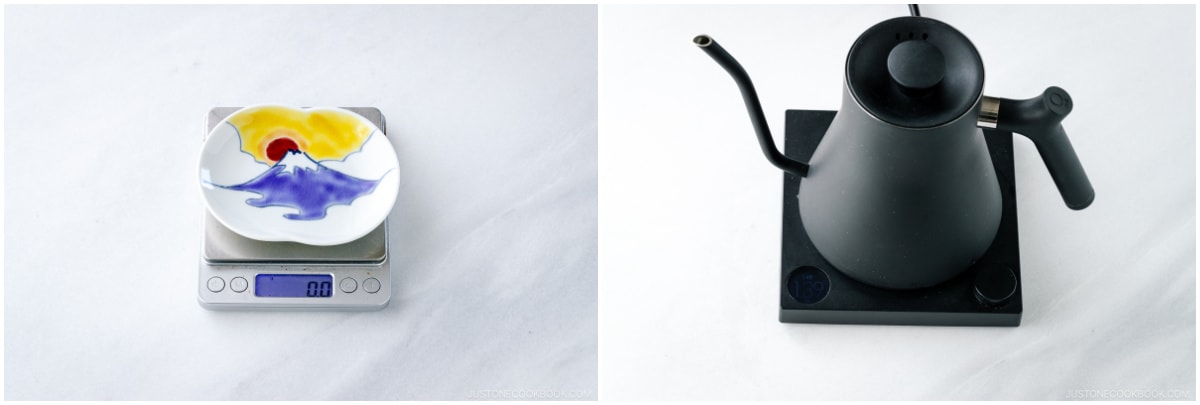
- Typically, Japanese teapots can hold 200–360 ml of tea.
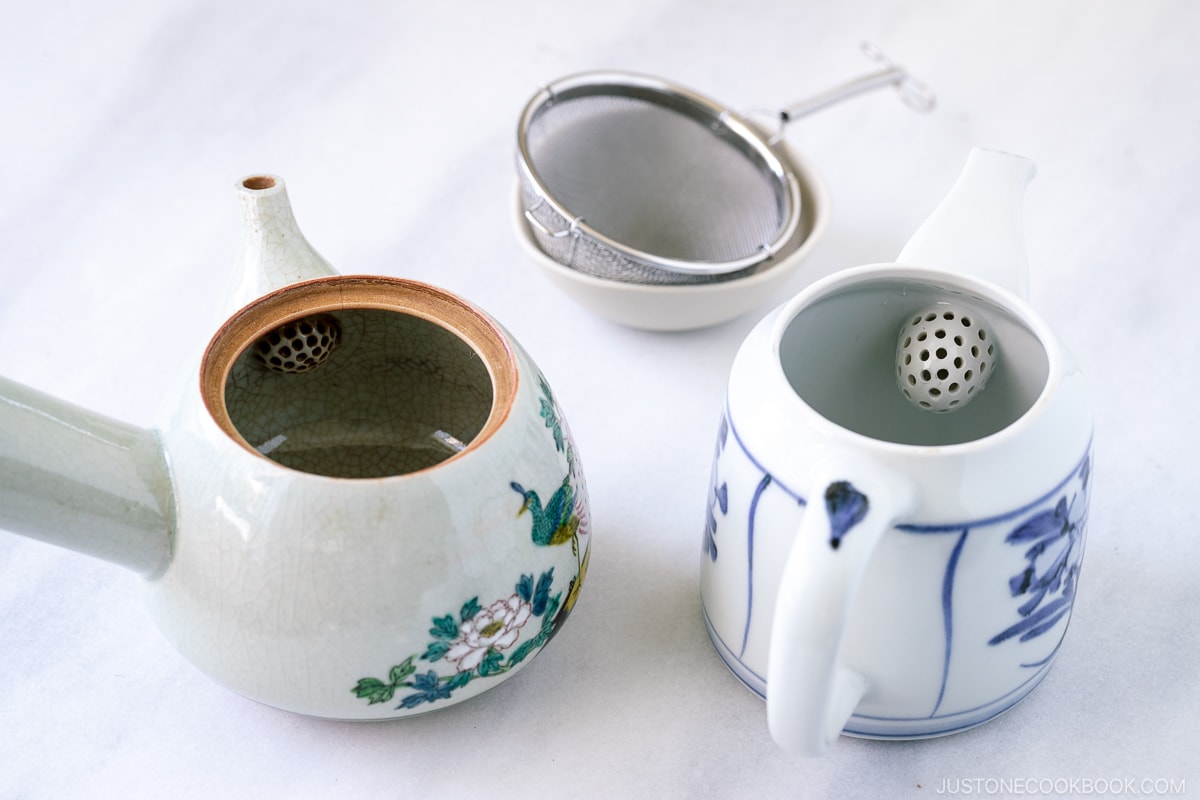
- Japanese tea cups range from 60–100 ml. Tip (optional): I highly recommend warming up the tea cups with hot water before serving to help keep the tea hot for a longer time.
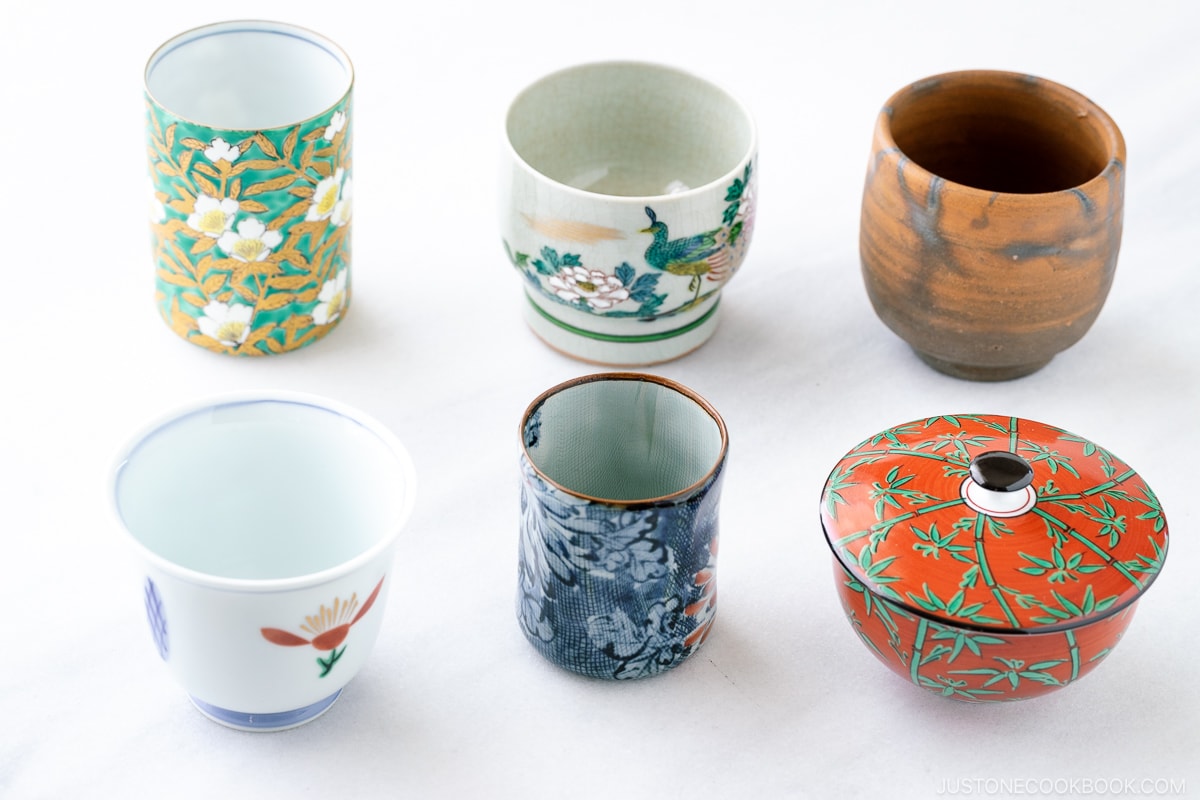
To Make the Japanese Green Tea
- Use a kitchen scale to measure the loose tea leaves (here, I‘m using gyokuro). Weigh 0.35 oz sencha, 0.35 oz hojicha, 0.35 oz genmaicha, or 0.35 oz gyokuro. Then, add the loose tea leaves to your teapot. Tip: As long as you use the same variety of tea leaves, you can remember the approximate amount and skip using a scale next time.
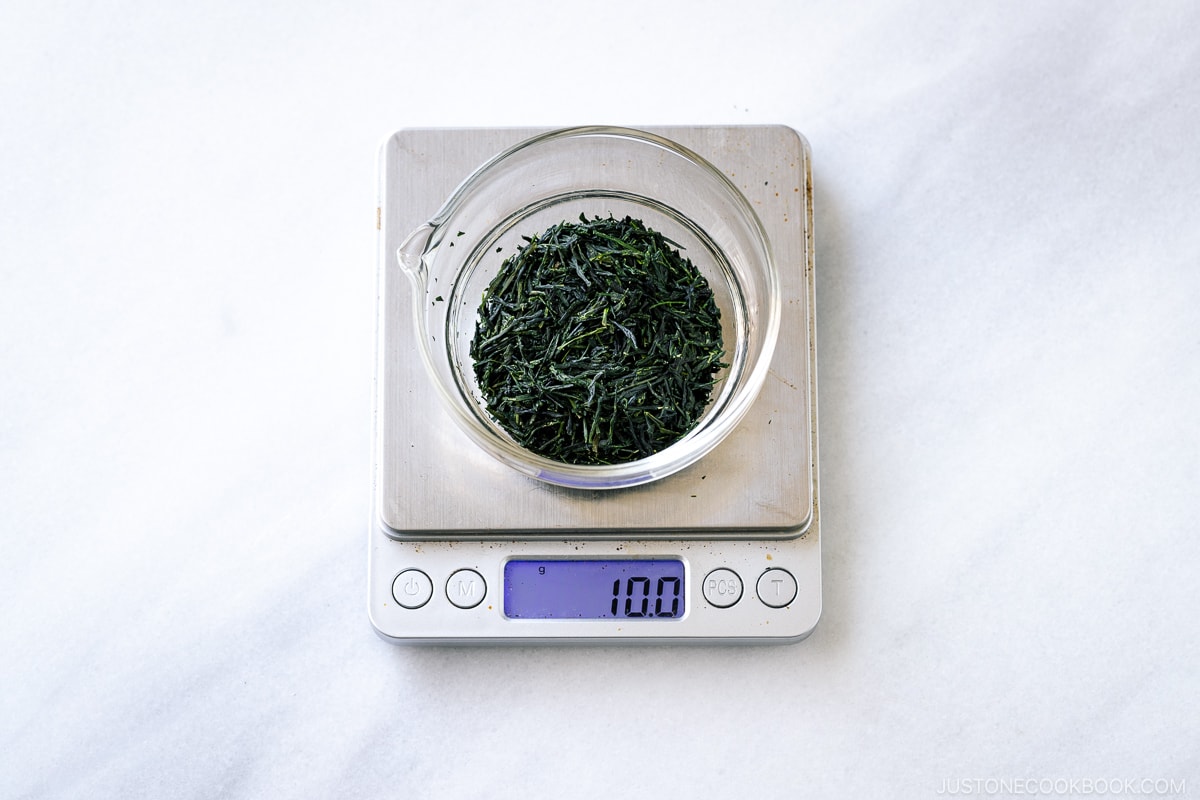
- Next, heat water in a kettle to the temperature indicated above for the type of tea leaves you’re using.
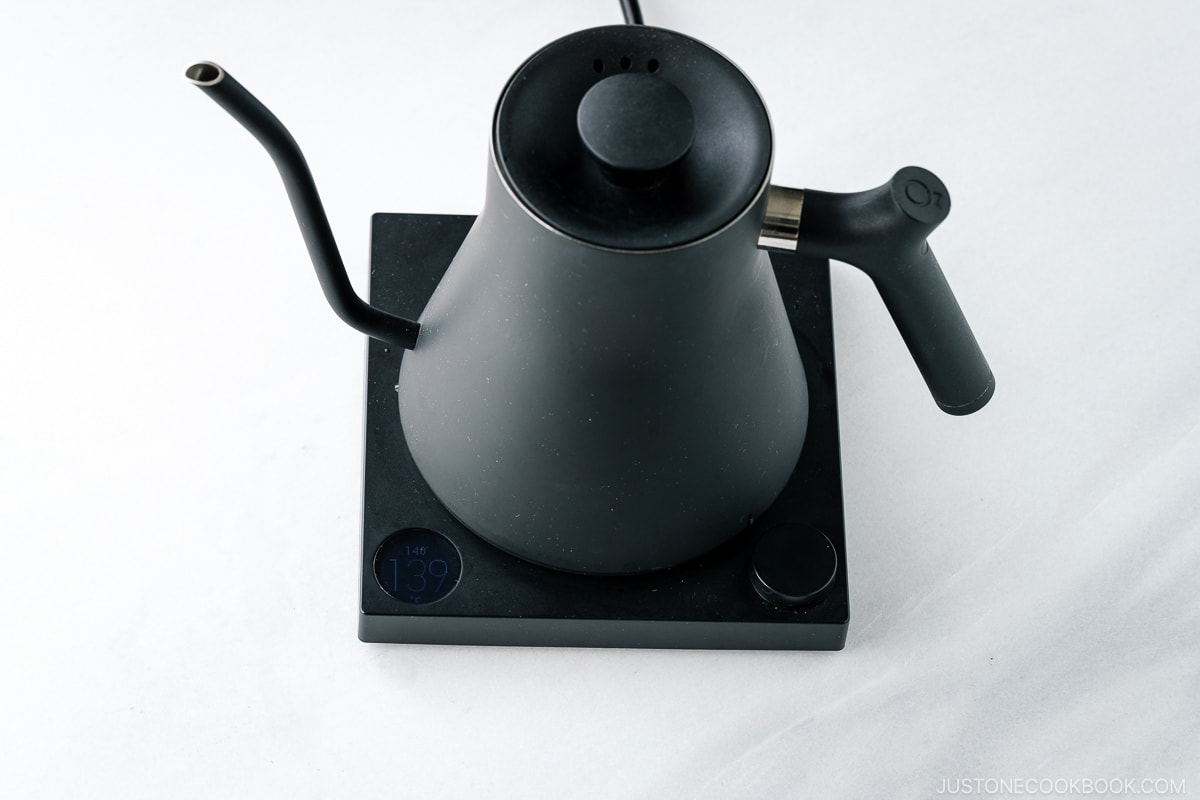
- To the teapot, add the measured amount of hot water at the right temperature. I pour the hot water directly into my teapot set on a kitchen scale. For sencha, add 7.5 oz hot water at 176ºF (80ºC); for hojicha, add 8.5 oz hot water at 212ºF (100ºC); for genmaicha, add 8.5 oz hot water at 212ºF (100ºC); or for gyokuro, add 6 oz hot water at 140ºF (60ºC). Then, close the lid and let it steep according to the brew times below. Tip: As long as you use the same variety and measurement of tea leaves, you can remember the approximate amount of water to use and skip the scale next time.

Brew Times
- Sencha: 1 minuteHojicha: 30–40 secondsGenmaicha: 30–40 secondsGyokuro: 90 seconds
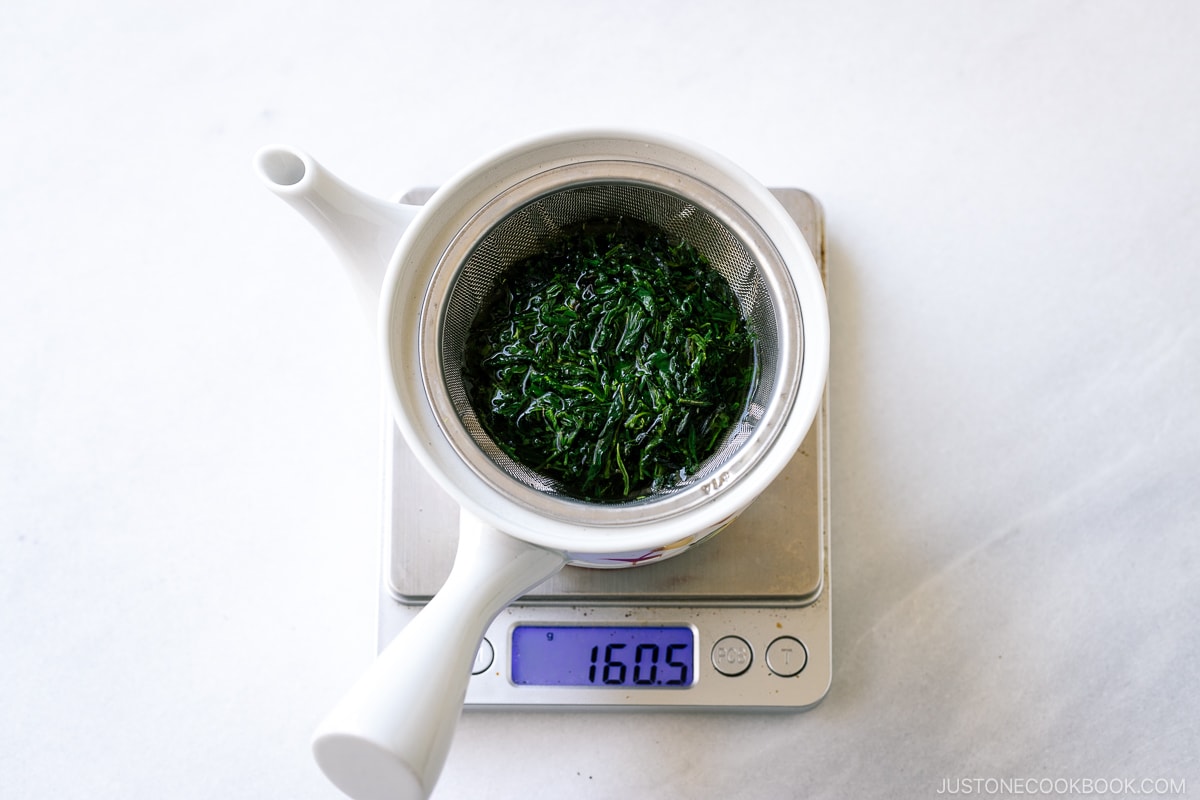
To Serve
- Pour into individual tea cups and serve immediately. You can refill the teapot at least 2–3 times with the same tea leaves.
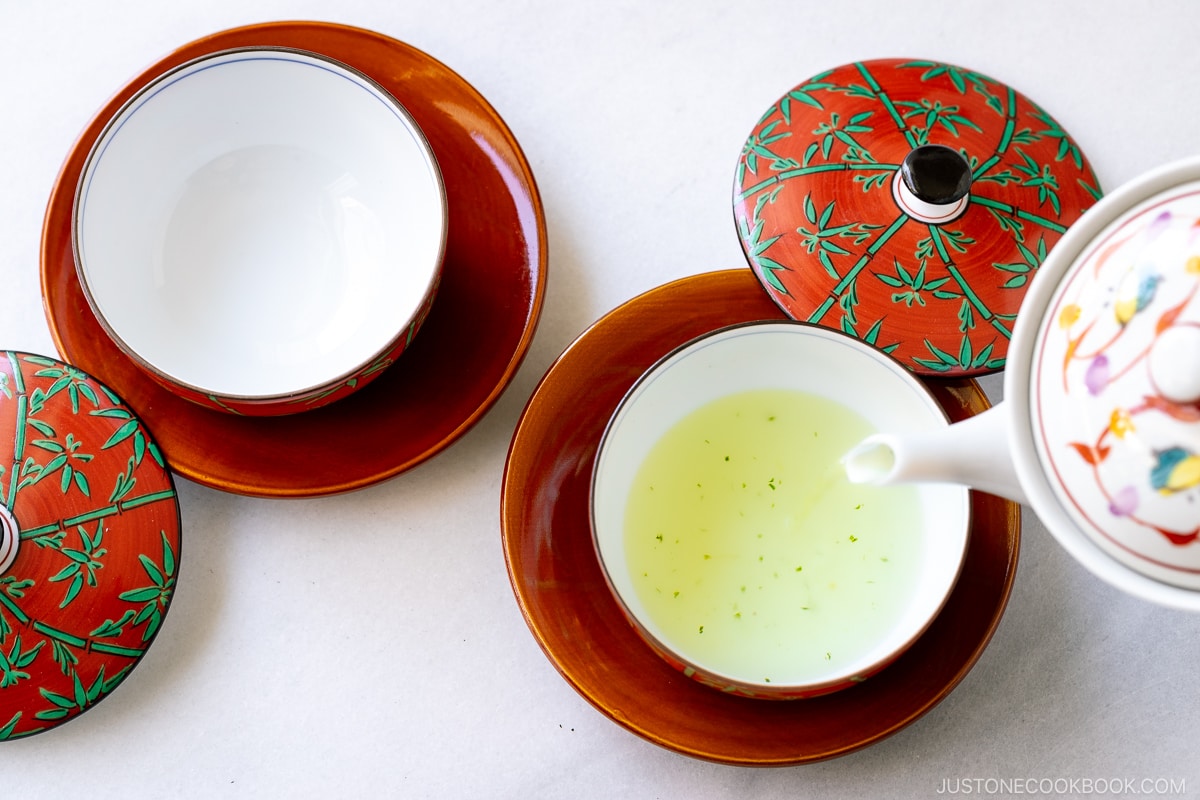
Nutrition
Did you make this recipe?
Tag @justonecookbook on Instagram so we can see your delicious creation!
Editor’s Note: This post was originally published on April 17, 2023, and updated on September 20, 2023. It was republished with more information on March 27, 2025.


